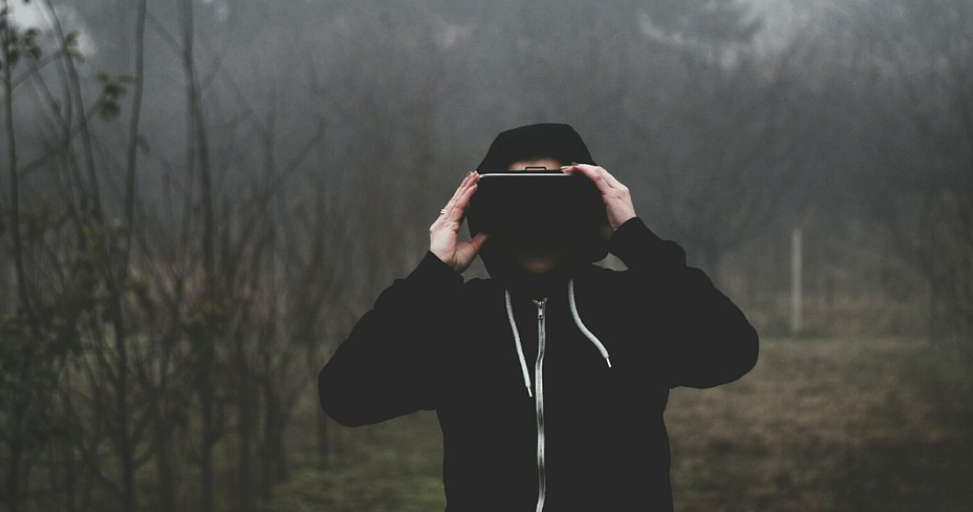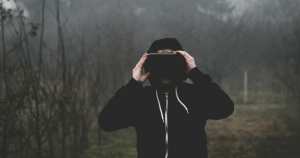The Future of Virtual Reality: How VR Is Transforming Entertainment and Beyond
Virtual reality (VR) has come a long way since its inception as a niche technology for gaming and early adopters. Today, VR is no longer just a futuristic concept confined to science fiction or a novelty for tech enthusiasts. It has grown into a powerful tool that is transforming entertainment, education, healthcare, social interactions, and beyond. The immersive potential of VR is opening up new possibilities for how we experience the world, both digitally and physically, pushing the boundaries of what we once thought possible. As the technology continues to advance, the future of virtual reality holds the promise of revolutionizing entire industries, changing how we work, play, and engage with the world around us.
At the forefront of this transformation is the entertainment industry, where VR is reshaping how we consume and interact with media. Gaming remains one of the most popular and widely recognized applications of VR, offering players a level of immersion that is unparalleled by traditional video games. With VR headsets like the Oculus Rift, PlayStation VR, and HTC Vive, gamers can step inside virtual worlds that feel almost tangible. These headsets allow players to physically move through digital environments, interact with objects, and experience gameplay in a way that mimics real-world actions. The sense of presence that VR creates, where the user feels as though they are actually inside the game, makes for a more engaging and exciting experience than ever before. Games like “Beat Saber,” “Half-Life: Alyx,” and “No Man’s Sky” have demonstrated the creative potential of VR, offering experiences that range from rhythm-based challenges to fully immersive narratives in vast, explorable universes.
But the future of VR in entertainment extends far beyond gaming. Film and television producers are exploring the possibilities of immersive storytelling, creating experiences where viewers are not just passive observers but active participants in the narrative. Virtual reality films and 360-degree videos place the viewer at the center of the action, allowing them to look around, explore, and even influence the story’s outcome. The emotional impact of these experiences is often heightened, as viewers feel more personally connected to the events unfolding around them. This new form of storytelling has the potential to revolutionize cinema, creating an entirely new genre of interactive media that engages the audience on a deeper level.
The music industry is also embracing VR, with artists experimenting with virtual concerts, music videos, and performances. Instead of watching a concert from a fixed camera angle, fans can now experience live performances from the front row or even from the stage itself, all from the comfort of their own homes. VR concerts provide a sense of proximity and immersion that is difficult to achieve through traditional video streaming. Artists like Travis Scott and Ariana Grande have held virtual concerts within video games like “Fortnite,” attracting millions of viewers and showcasing the potential of VR to create unique and large-scale entertainment experiences. As technology improves and VR becomes more accessible, it is likely that virtual concerts and performances will become a regular part of the entertainment landscape.
Beyond entertainment, VR is also making significant inroads into education and training. The immersive nature of virtual reality makes it a powerful tool for teaching and learning, offering students and professionals the ability to practice skills, explore complex concepts, and engage with subject matter in ways that would be impossible in a traditional classroom or training environment. Medical students, for example, can use VR to simulate surgeries and practice procedures in a controlled, risk-free environment. This hands-on experience allows them to gain confidence and expertise before performing on real patients. Similarly, in fields like aviation and engineering, VR is being used to train professionals in highly technical tasks, providing realistic simulations of equipment, tools, and environments. The ability to simulate complex scenarios and practice skills repeatedly without the constraints of time, cost, or safety concerns makes VR a valuable asset in education and workforce training.
Healthcare is another area where VR is making a profound impact. Beyond medical training, virtual reality is being used for therapeutic purposes, such as pain management, rehabilitation, and mental health treatment. For patients recovering from physical injuries, VR offers an engaging way to perform rehabilitation exercises, helping to improve mobility and reduce recovery time. In mental health, VR is being used to treat conditions like anxiety, PTSD, and phobias by creating controlled, immersive environments that allow patients to confront and overcome their fears. By gradually exposing patients to the source of their anxiety in a safe and controlled virtual space, therapists can help them desensitize and manage their symptoms. These applications of VR are not only improving patient outcomes but also changing the way healthcare providers approach treatment and care.
Social interactions are also evolving with the rise of VR. Virtual reality is creating new opportunities for people to connect with each other in immersive digital spaces, overcoming the limitations of distance and physical presence. Platforms like VRChat and Facebook’s Horizon Worlds allow users to interact with others in shared virtual environments, where they can hang out, play games, attend events, or even collaborate on projects. These social VR spaces provide a level of engagement and presence that goes beyond traditional video calls or messaging, allowing users to communicate and interact as if they were physically together. As more people embrace remote work and digital collaboration, VR is poised to play a significant role in how we interact socially and professionally in the future.
One of the most exciting possibilities for VR is its potential to create entirely new types of experiences that go beyond what is possible in the physical world. In the virtual realm, the laws of physics, time, and space can be bent or completely rewritten, allowing for creative possibilities that would be unimaginable in real life. This opens the door to experiences that range from fantastical adventures in imaginary worlds to explorations of abstract concepts like time travel or alternate realities. As VR technology continues to improve, with better graphics, more sophisticated tracking, and more intuitive interfaces, these experiences will become even more immersive and lifelike, blurring the lines between the real and virtual worlds.
The future of VR is also closely tied to the development of the metaverse—a collective virtual space that combines elements of social interaction, entertainment, commerce, and digital economies. Tech giants like Meta (formerly Facebook) and Microsoft are heavily investing in the creation of metaverse platforms, where users can work, socialize, shop, and play in interconnected virtual environments. The metaverse represents a vision of a future where VR is not just a tool for entertainment or education but a fully integrated part of our daily lives. In this future, virtual reality could become a primary way we interact with the digital world, offering new possibilities for everything from remote work to online commerce.
As VR continues to evolve, it is clear that its impact will extend far beyond entertainment. The immersive nature of virtual reality makes it a versatile and powerful tool with applications across a wide range of industries, from healthcare and education to social interaction and beyond. While there are still challenges to overcome—such as the high cost of entry for advanced VR systems and concerns about the long-term effects of immersion—there is no doubt that VR is shaping the future of digital experiences. As technology improves and becomes more accessible, virtual reality will become an increasingly important part of how we live, work, and play, transforming not just entertainment but the very fabric of our everyday lives.














Post Comment